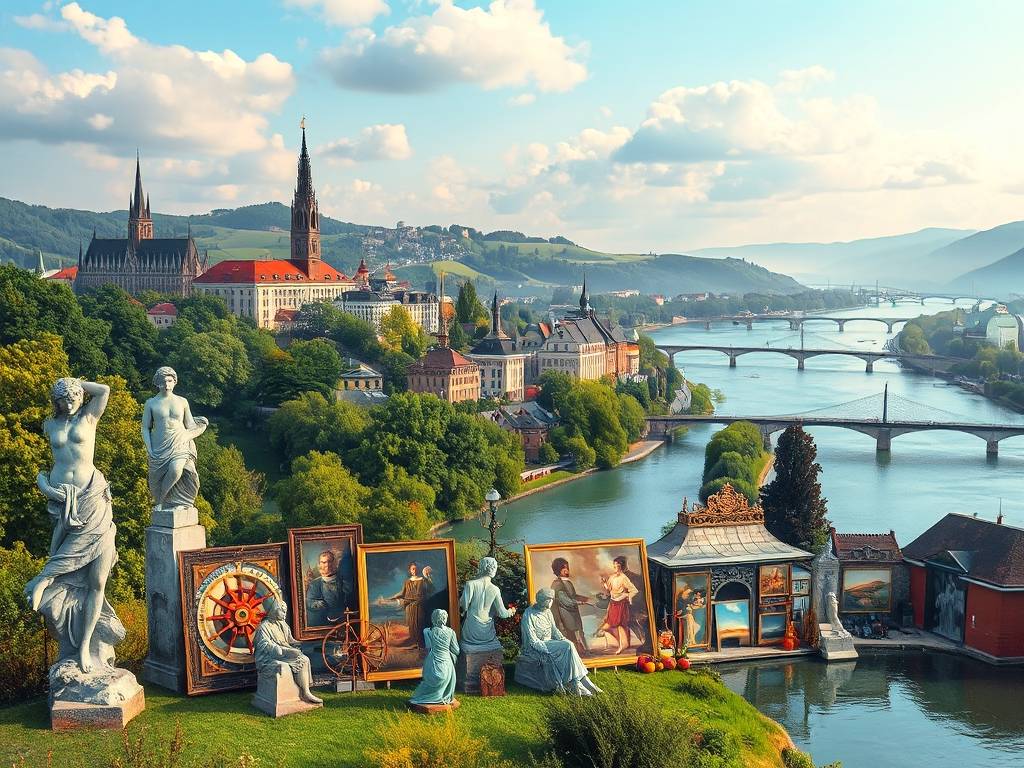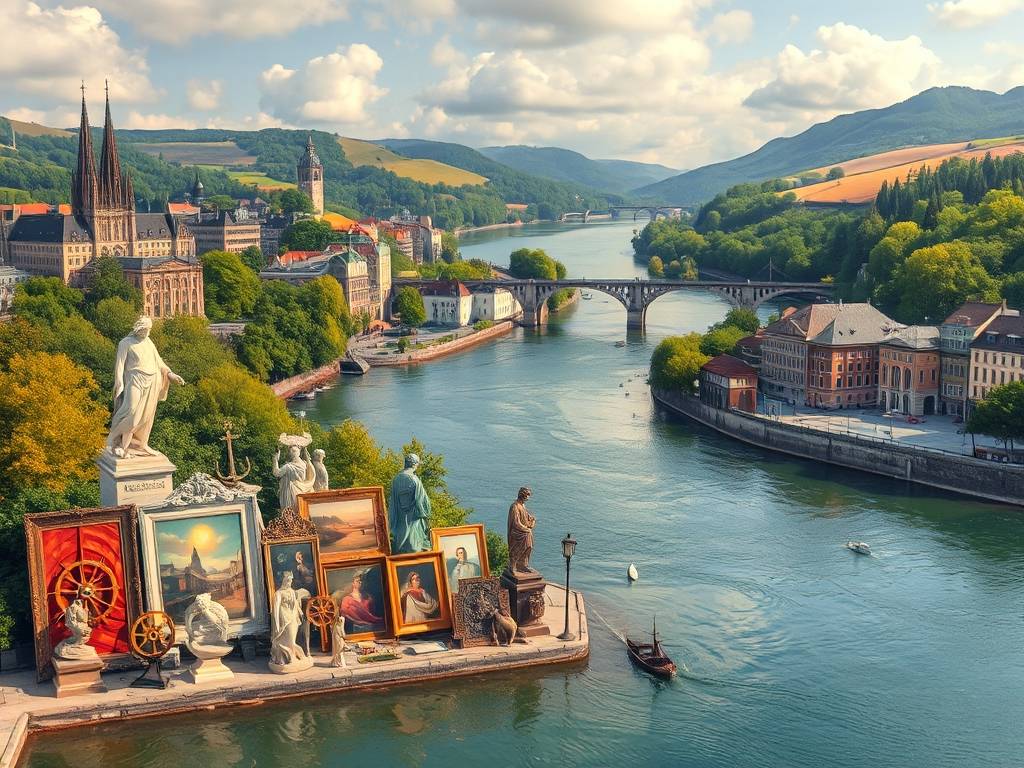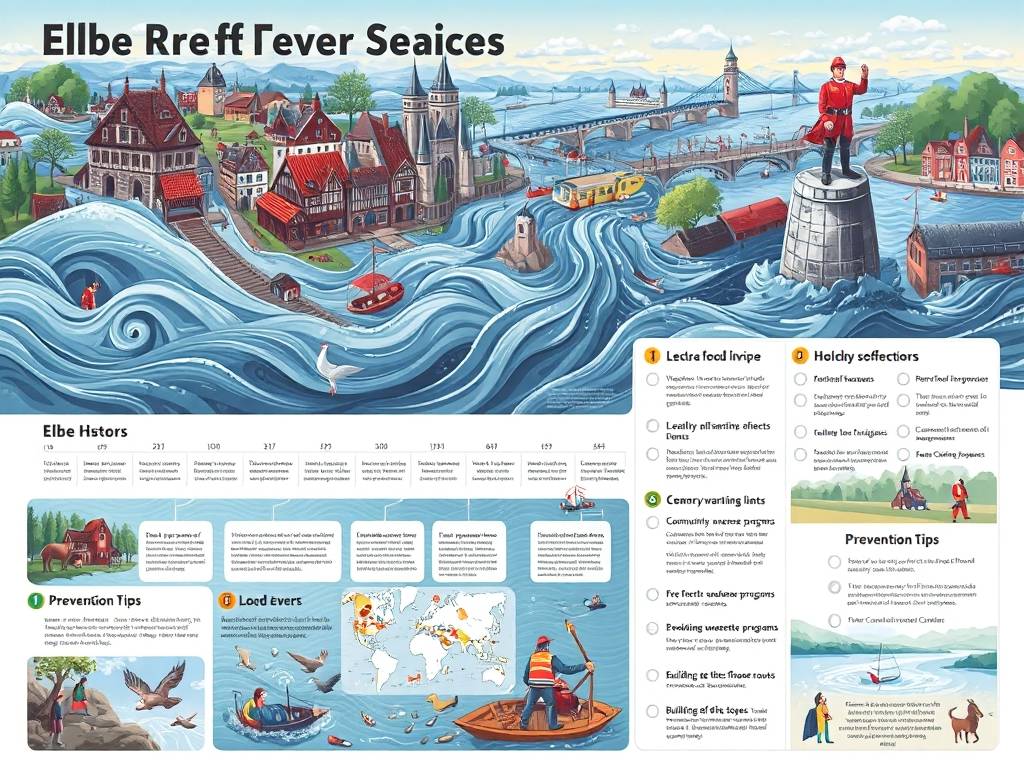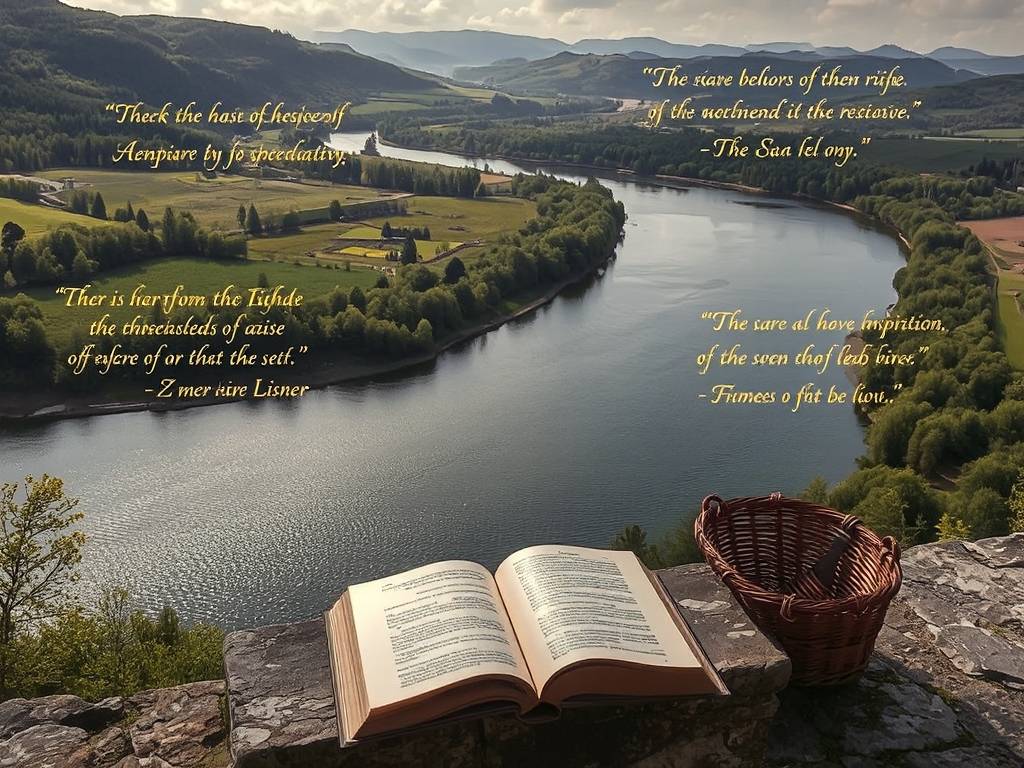Global Travel Information
Elbe River Artistic Heritage: Paintings & Sculptures of the Waterway
The Elbe River: A Canvas of Time Where Art and Water Intertwine
There is a unique magic to rivers; they are not merely bodies of water but the lifeblood of the landscapes they carve. They are storytellers, carrying tales of cities, cultures, and centuries in their currents. Among Europe's great waterways, the Elbe River holds a special place, not just as a geographic marvel but as a silent, flowing muse. For generations, its ever-changing face—from the dramatic sandstone peaks of Saxon Switzerland to the serene, vineyard-clad slopes around Dresden and the mighty port energy of Hamburg—has captivated artists. The artistic heritage of the Elbe River is a rich tapestry woven with brushstrokes and sculpted forms, a visual chronicle that allows us to see the waterway through the eyes of those who loved it most. This journey explores how paintings and sculptures have immortalized the Elbe, transforming it from a simple river into a powerful symbol of romance, power, and human ingenuity.
The 19th century, particularly in Germany, was a period of profound artistic awakening, and the Elbe was at the heart of this movement. The Romantic painters, with their yearning for the sublime and the spiritual in nature, found their perfect subject in the Elbe's diverse scenery. Caspar David Friedrich, perhaps the most iconic of these voices, did not merely paint landscapes; he painted moods and meditations. His works, though often featuring the Baltic Sea, are spiritually aligned with the Elbian aesthetic. When we look at a painting like "Wanderer above the Sea of Fog," we can feel the same awe that the Elbe's gorges inspire. Artists like Ludwig Richter and Carl Gustav Carus, however, captured the river itself with breathtaking fidelity. Richter's idyllic and often poetic depictions of the Elbe Valley near Dresden present a harmonious world where humanity and nature coexist peacefully. His works are a masterclass in Elbe River landscape painting, showcasing sun-dappled forests, quaint riverbanks, and barges with billowing sails, creating a timeless, almost nostalgic vision of 19th-century German art scenes.

Carus, a close friend of Friedrich and a man of both science and art, brought a different perspective. His paintings and writings reveal a deep, almost scientific observation of the Elbe's atmosphere and geology. He sought to capture the Urleben, or primal life, of nature. His depictions of the Elbe at dawn or dusk, with mist rising from its surface and the rock formations of Saxon Switzerland looming like ancient giants, are less about idealized beauty and more about the raw, enduring power of the natural world. These artists established a visual language for the river, one that emphasized its role as a source of inspiration and spiritual solace. Their legacy is the foundation of what we might call the Romantic vision of the Elbe waterway, a perspective that continues to draw visitors to the region, hoping to catch a glimpse of the sublime that Friedrich and his contemporaries immortalized.
As we move from the ethereal realms of Romanticism into the bustling modern era, the portrayal of the Elbe in art underwent a significant transformation. The river was no longer just a spiritual muse; it became a symbol of industry, commerce, and human ambition. This shift is vividly clear when contrasting the serene paintings of the 19th century with the dynamic works of the early 20th century. The Die Brücke (The Bridge) movement, born in Dresden, brought a new, raw energy to German art. While they are more famous for their figure paintings, their surroundings—the city of Dresden on the Elbe—inevitably seeped into their work. They exchanged the subtle tones of the Romantics for jarring, expressive colors and bold, simplified forms. A view of the Elbe bridges or the industrial activity on the river from this period would have been rendered with a fierce, unromantic intensity, reflecting the changing times.
This evolution in perspective is perhaps most starkly visible in the artistic legacy of the Elbe in Hamburg. Here, the river is not a placid valley but a pulsating artery of global trade. The Port of Hamburg, the "Gateway to the World," became a subject worthy of its own artistic documentation. Paintings and lithographs from the late 19th and early 20th centuries depict a forest of masts and smokestacks, with towering sailing ships and early steamers vying for space. The focus was on the human drama of the docks—the hustle of dockworkers, the loading of goods, and the imposing architecture of warehouses and custom houses. This was Elbe River maritime art at its most potent, celebrating not the quiet beauty of nature, but the thrilling chaos of industry and connection. It portrayed the Elbe as a force of economic power, linking the heart of Europe to distant continents, a theme that was central to the city's identity and its cultural heritage along the Elbe waterway.

While paintings provide a window into the soul of the river, the sculptures along the Elbe offer a more tangible, interactive form of artistic engagement. They are not just representations of the river's story; they are physical parts of it, embedded in its banks and cities. The sculptural heritage here is diverse, ranging from grandiose monuments to subtle, integrated works. In Dresden, the Brühlsche Terrasse, famously known as the "Balcony of Europe," is itself a sculptural masterpiece overlooking the river. Adorned with statues and fountains, it offers a panoramic view that is a work of art in itself, framing the Elbe for every visitor. The equestrian statue of King John of Saxony stands here, a silent sentinel who once presided over a city renowned for its cultural and artistic flourishing.
Moving downstream, the relationship between sculpture and the river becomes even more dramatic. The Saxon Switzerland National Park, a highlight of the Elbe River valley art history, is a landscape that appears to have been sculpted by divine hands. The bizarre, towering sandstone formations like the Bastei bridge are natural sculptures, and for centuries, they have attracted not only painters but also rock climbers and hikers, who interact with the landscape physically. Here, art is not just something you observe; it's an environment you inhabit. Further north, in cities like Meissen and Torgau, statues of historical figures and allegorical figures dot the riverfront, each telling a piece of the regional history. In Hamburg, modern sculptures along the HafenCity development, such as the whimsical "Hummelwelle" or various abstract forms near the Elbphilharmonie, showcase a contemporary dialogue with the river. They represent a continuation of the sculptural landmarks on the Elbe banks, proving that the artistic conversation between humanity and this waterway is alive and evolving. This blend of natural and man-made sculpture creates a unique guide to Elbe River's cultural heritage, where a walk along the river is a walk through a sprawling, open-air museum.
Ultimately, the true power of the Elbe's artistic heritage lies in its ability to connect us across time. A painting by Ludwig Richter, created nearly two centuries ago, can still evoke the gentle peace of a summer afternoon on the river. A photograph of a Hamburg dockworker from the 1900s shares a tangible link with the bustling container ports of today. The sculptures that grace its banks are permanent markers of memory, honoring rulers, artists, and the anonymous toil that shaped the region. This rich tapestry of visual culture does more than just decorate; it informs and deepens our own experience. When you take a Elbe River cruise from Dresden views, you are not just a passive tourist. You are retracing the sightlines of Romantic painters. You are floating past the same cliffs that inspired poets and the same cityscapes that fueled industrialists. You are participating in a living history, narrated through art.
The legacy of paintings and sculptures of the Elbe waterway is a gift that keeps on giving. It teaches us to see beyond the water's surface, to appreciate the layers of history, mythology, and human emotion that have been projected onto it. It solves the problem of understanding a place on a deeper level, offering not just a timeline of events, but a timeline of feeling. So, the next time you gaze upon the Elbe, whether in person or through a masterpiece in a museum, remember that you are looking at more than a river. You are looking at a canvas of time, a flowing sculpture of history, and an eternal source of inspiration that continues to weave its magic, inviting us all to add our own small stroke to its enduring story.
相关文章
- Elbe River Photography Spots: Capture Stunning Views
- Elbe River Literary Connections: Authors Inspired by the River
- Elbe River Flood History: Past Events & Prevention Tips
- Elbe River Eco-Tourism: Sustainable Travel Options
- Elbe River Family-Friendly Activities: Fun for Kids
- Elbe River Romantic Getaways: Perfect Dates by the Water
- Elbe River Solo Travel Guide: Tips for Lone Explorers
- Elbe River Food & Drink: Local Cuisine Along the Banks
- Elbe River Wine Regions: Vineyards Near the Waterway
- Elbe River Beer Gardens: Relax with a Pint by the River
发表评论
评论列表
- 这篇文章还没有收到评论,赶紧来抢沙发吧~


